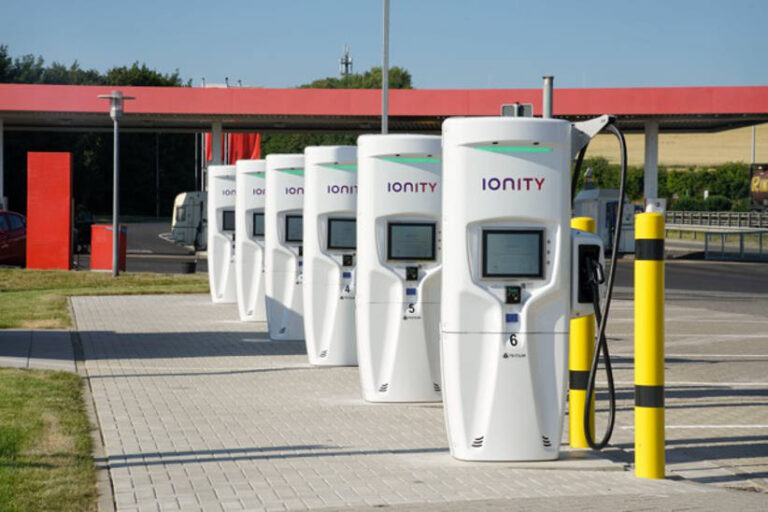– By Caroline Falls –
Recently in Brisbane on a drive event to check out Hyundai’s release of Ioniq electric vehicles we took a detour to the headquarters of Tritium, an Australian-based company making inroads the world over with its fast charging units.
The first thing we did was reverse up to their bank of tall, slim chargers and plug in the compact fully electric Ioniq premium model. Then we just walked away (unlike a petrol bowser which you need to attend to, you just leave your electric vehicle on a charger and go and do something else).
What did we do with our spare time? We went into Tritium’s boardroom in one of three adjacent buildings in the light industrial area of Murarrie, about 15 minutes from the city centre, and learned about the incredible ride this company is on.
Tritium is employing people so fast, including an engineer a week, it can’t give out an accurate head count, but it’s more than 250.
“We tried to get an exact number of employees from our HR department, but it’s not possible,” said Tobias Sonnenburg, Tritium’s vice president of product development, adding, “We’re growing really quickly.”
Four years ago, when the company had 10 employees, the founders seized the opportunity to adapt their original product — an electric motor inverter — for the EV charging market.
Today, it’s deployed more than 2,500 DC fast chargers in 26 countries. It has opened offices in Amsterdam and Los Angeles. Tritium’s fast chargers comprise the 50kW Veefil-RT, which supplies as much as 50 km range for an EV in 10 minutes, and the more powerful Veefil-PK, that provides 350 km in 10 minutes.
One of the founders of the company, James Kennedy, engineering director and chief technology officer, said Tritium has captured 20 percent of the global market for fast chargers. Tritium’s modus operandi has been to target the countries which have incentivised the adoption of EVs, such as Norway, where government taxes favour zero-emission vehicles over polluting vehicles.
Locally, it was selected by the Queensland Government to rollout the longest network of fast chargers in the world — the Brisbane to Cairns highway (Click this link for map of EV charging units).
In July, Ionity, a Munich based joint venture of OEM’s — BMW, Daimler, Ford and Volkswagen — announced it had chosen Tritium to construct 100 high-power 350 kW charging sites across Germany, France, UK, Norway and Sweden. Each site will have an average of six user units.
“We chose to partner with Tritium because they have a world-leading technology and have shown they can develop and deliver their products quickly,” said Ionity CEO Michael Hajesch.
A core unique element of Tritium’s technology is the liquid cooling unit, enabling Tritium to house the charging equipment in a unit more compact and sleek than its competitors, such as ABB and Nissan.
Tritium was established in 2001 by three former University of Queensland engineering students who’d been part of Team SunShark in the 1999 World Solar challenge, winning third place.
Kennedy and co-founders David Finn and Paul Sernia developed the technology for the inverter that drove the engine; the same technology adapted to meet demands in the burgeoning field of EVs.
This year the company has won a slew of prizes for its EV charging technology, including the Optus Business Platinum award, Qld Urban Utilities award for product innovation, Premier of Qld Exporter of the Year award and Premier of Qld Manufacturing award.
After a quick tour of the factory, which Kennedy said was churning out 16 units a day, we got back into the recharged Ioniq, and continued on our quiet, smooth, emission-free, electric drive.






